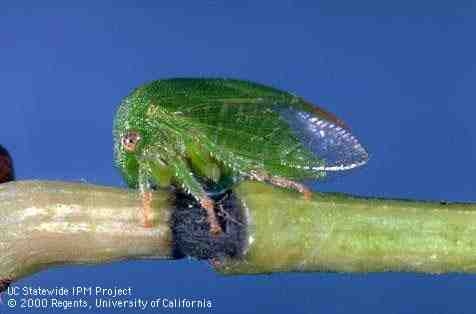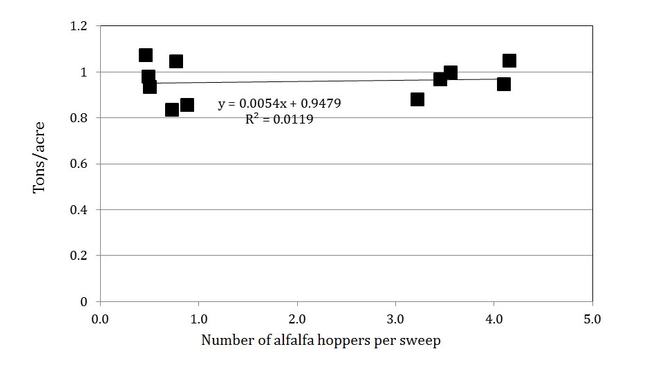
The threecornered alfalfa hopper is a green, wedge-shaped insect about the size of a Lygus bug. These leafhopper pests have piercing-sucking mouthparts and feed on the stems of alfalfa plants, often girdling stems at the base of plants. The resulting damage includes wilting and yellowing and eventual dieback of individual stems. Injury is also caused when adult female hoppers insert their eggs into stems, weakening them.
Threecornered alfalfa hoppers can be found year-round, but in the Central Valley, numbers usually peak in late September and October. This year, they’re out in high numbers earlier (late August). In the low desert, there are two population peaks for adults: one in late July/early August and a larger second peak in September/early October.
Monitoring and treatment guidelines have not been developed, and there are no known parasitoids or predators affecting populations of this insect in California.
However, in a recent study at UC Davis looking at yields (tons/ac) versus average number of alfalfa hoppers per sweep over a period of 15 days, yields were not negatively impacted by feeding damage at 3-4 alfalfa hoppers per sweep (Figure 1).
Figure 1. Alfalfa yield (tons/acre) versus average number of threecornered alfalfa hoppers per sweep shows that the economic threshold level for this pest is somewhere above 3-4 hoppers per sweep. 